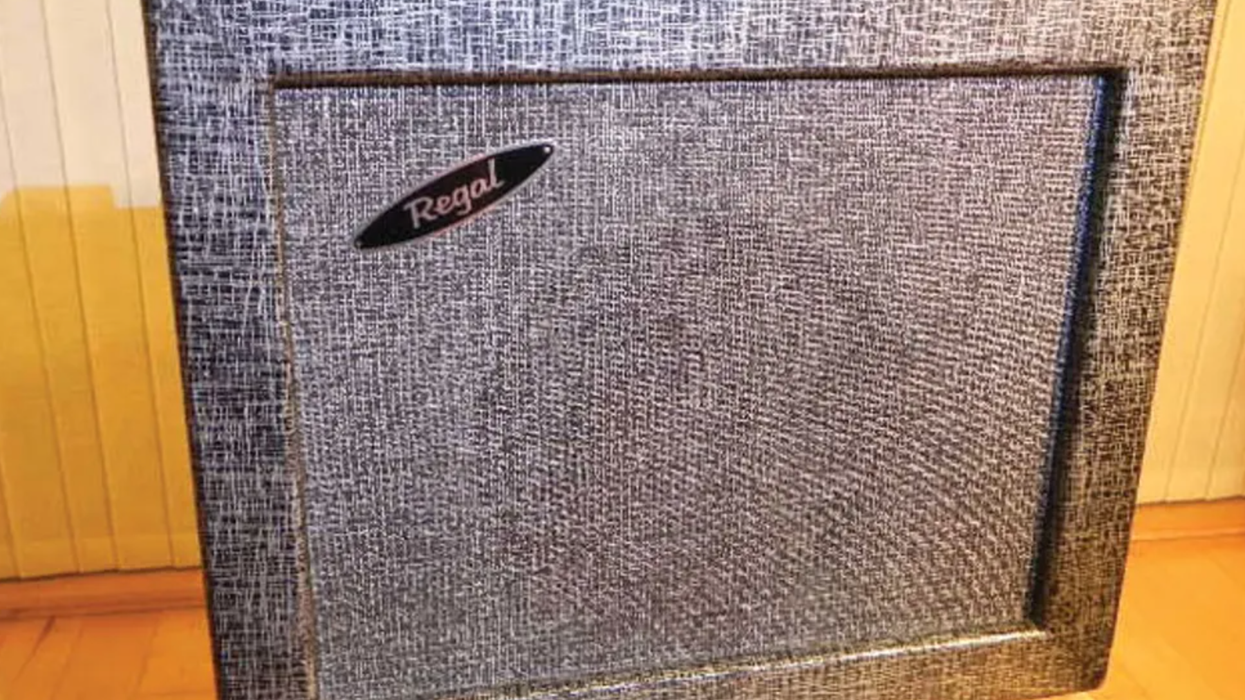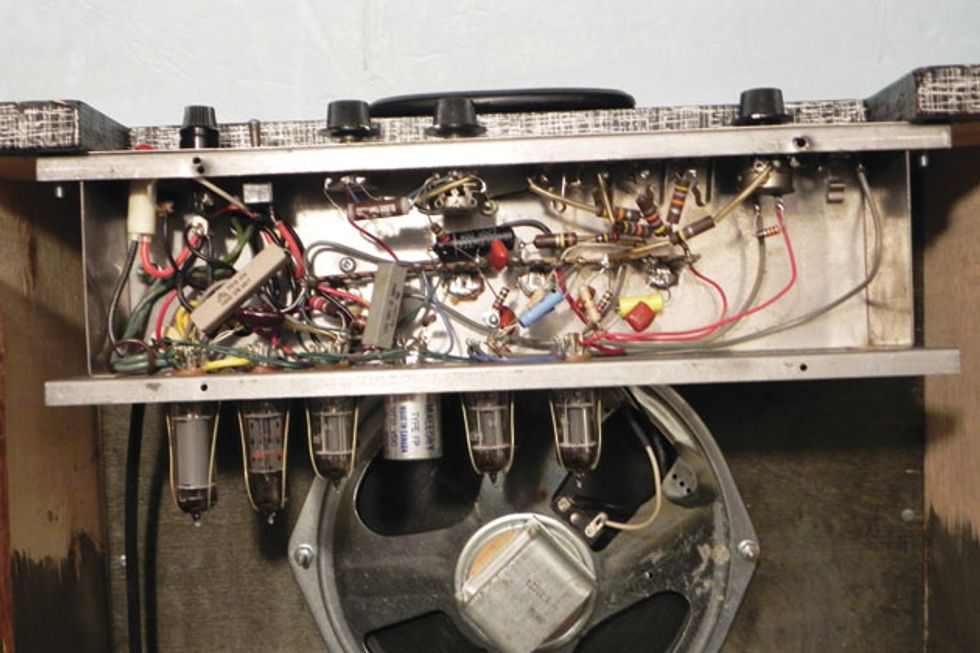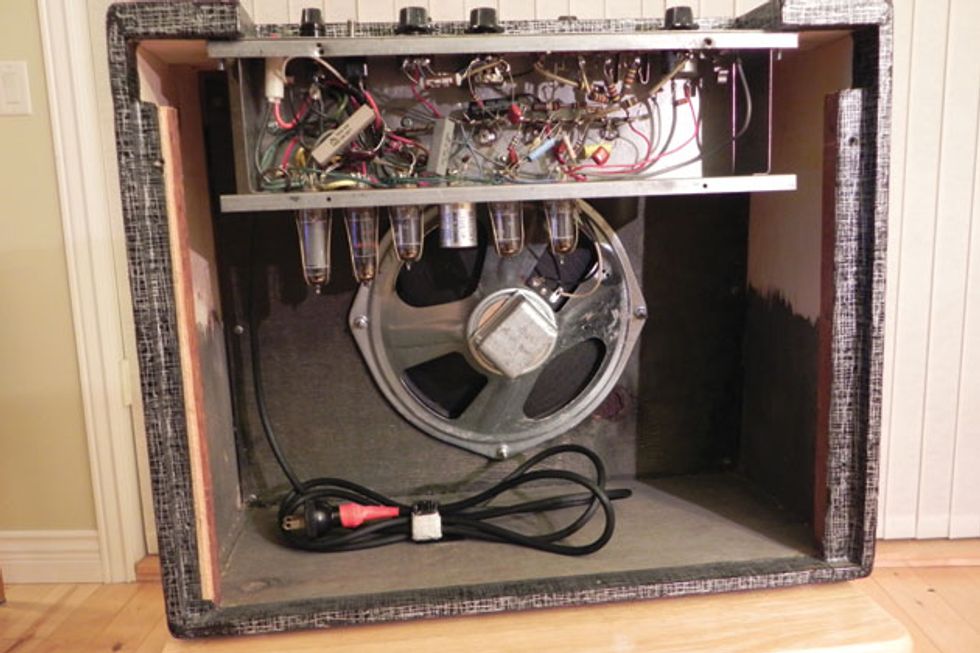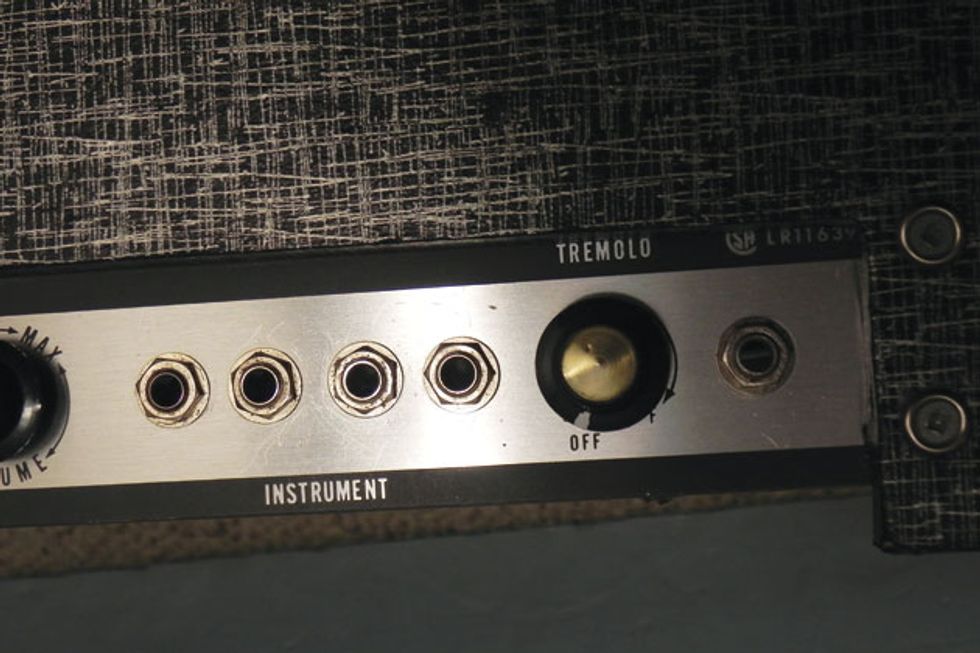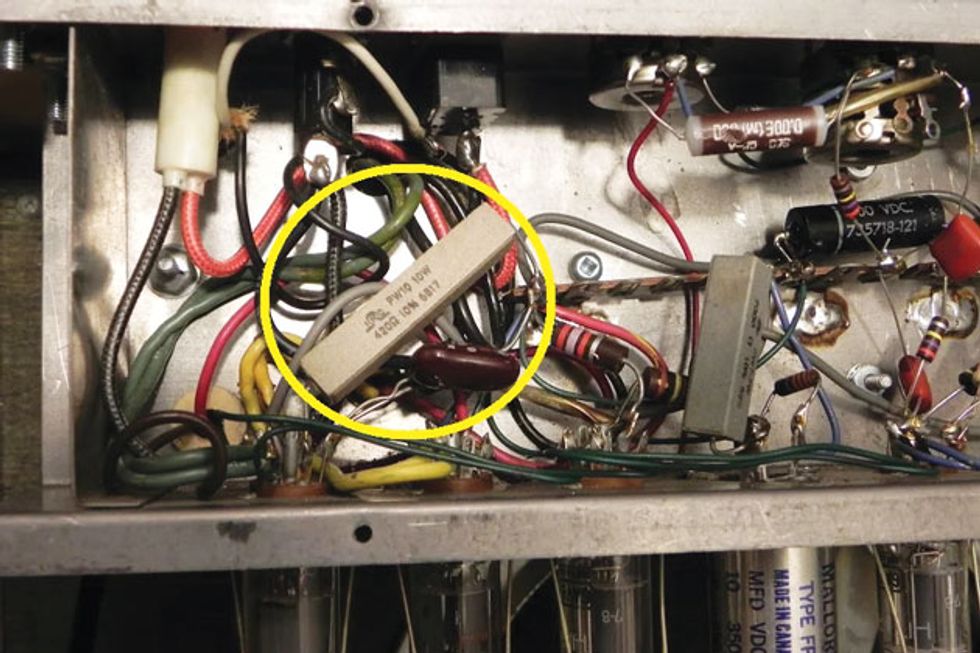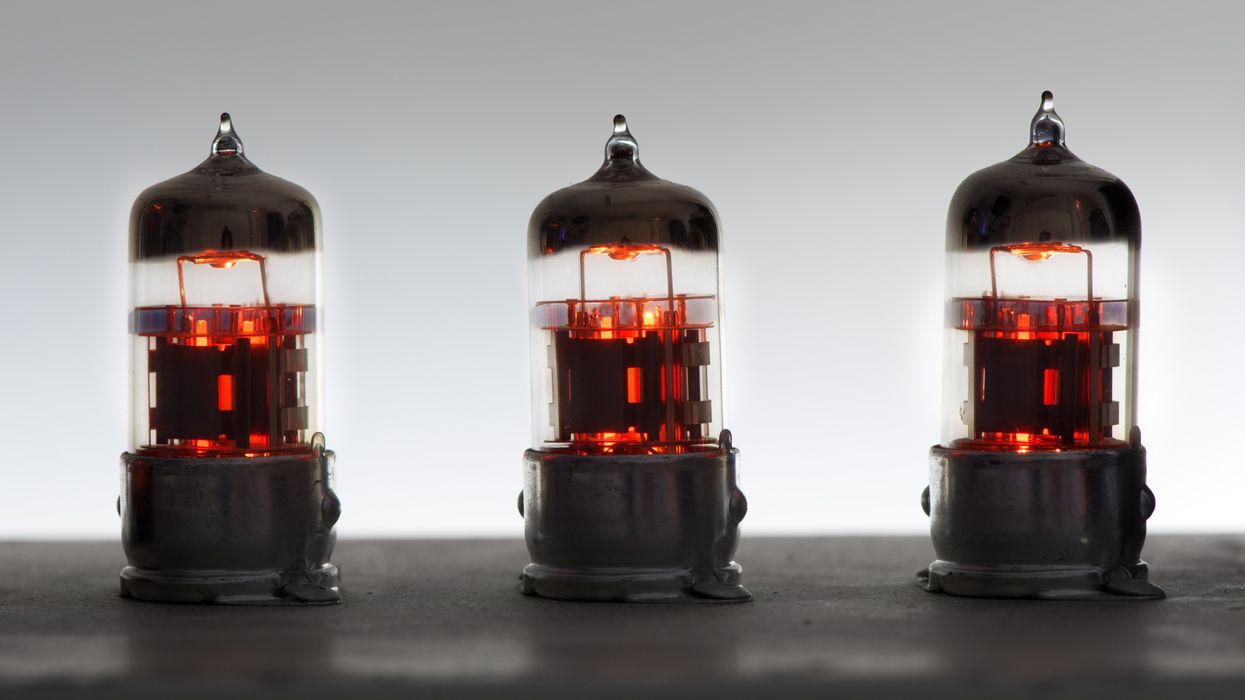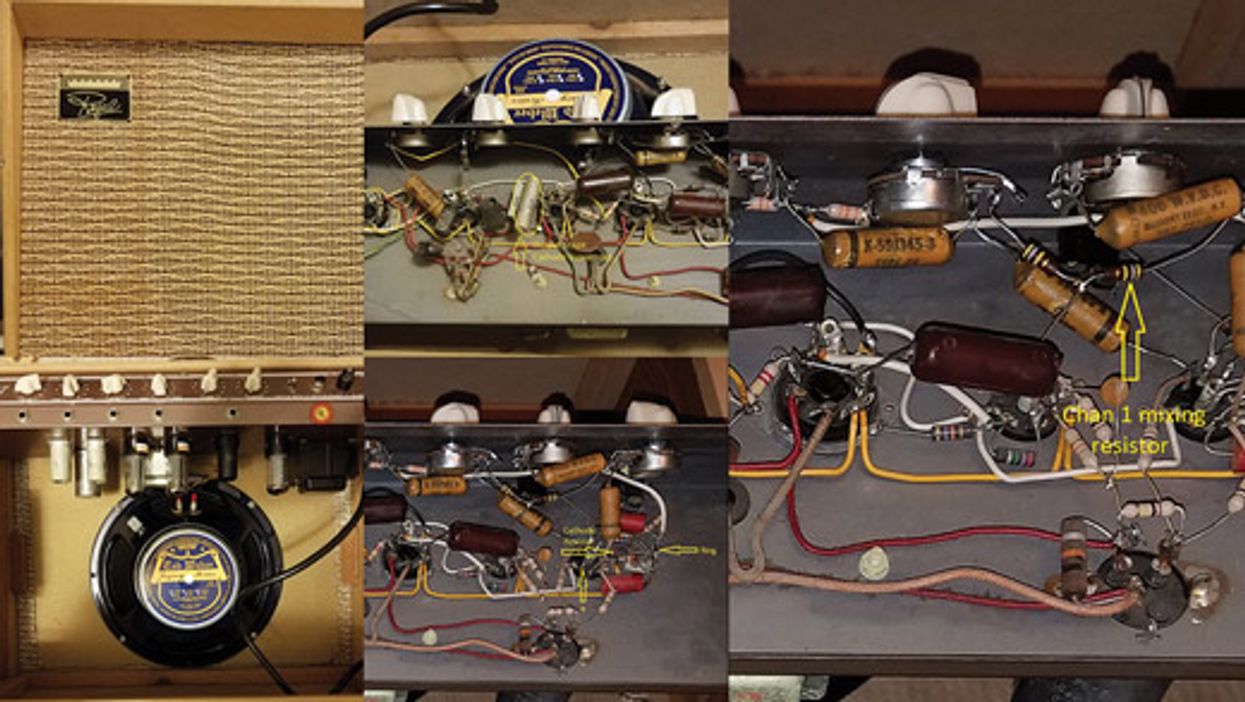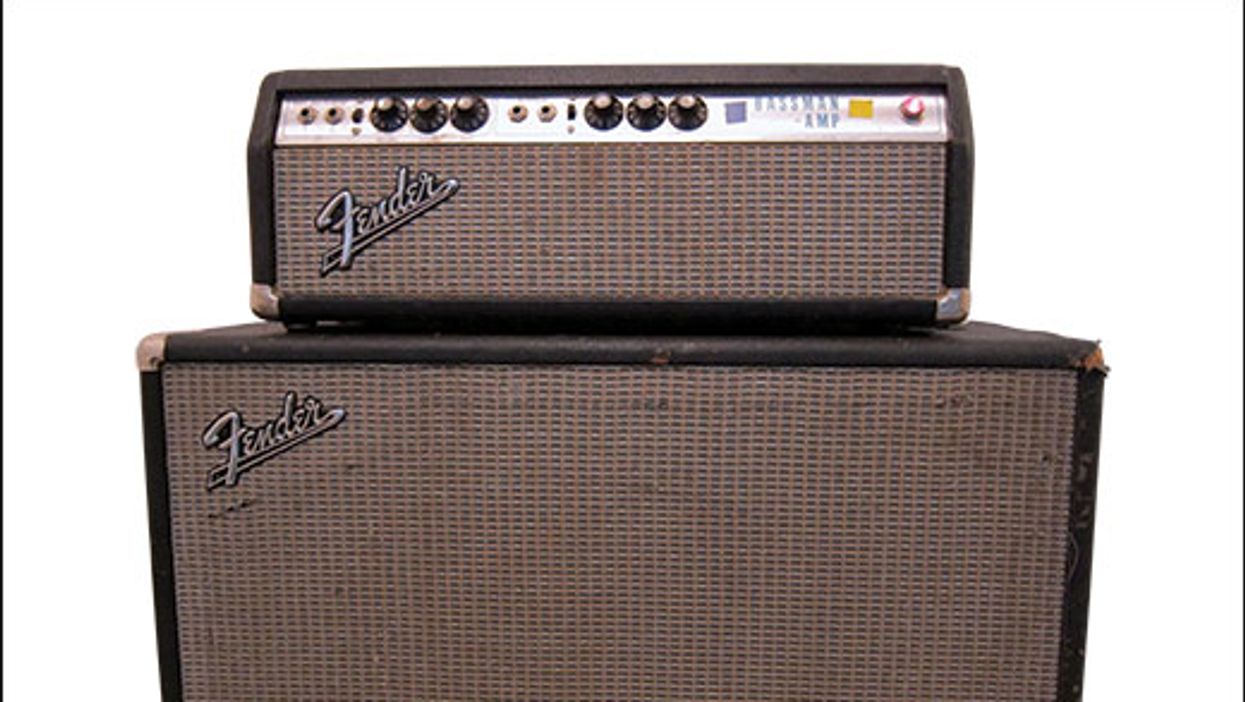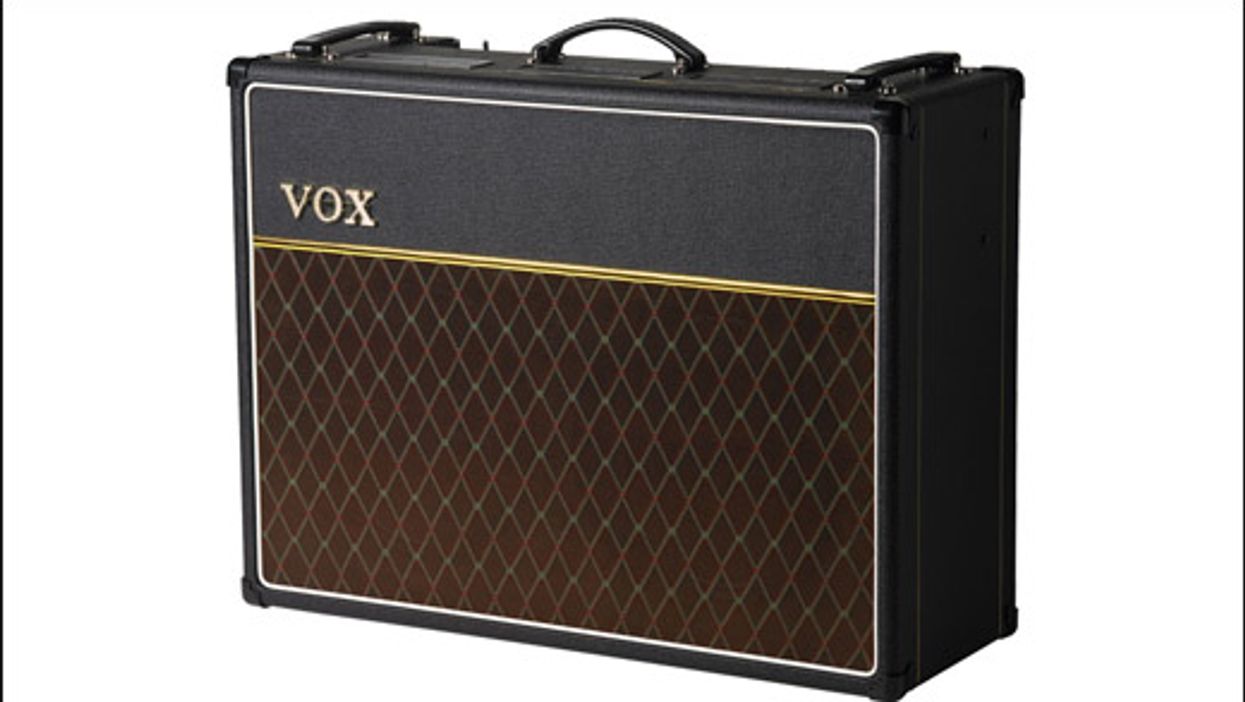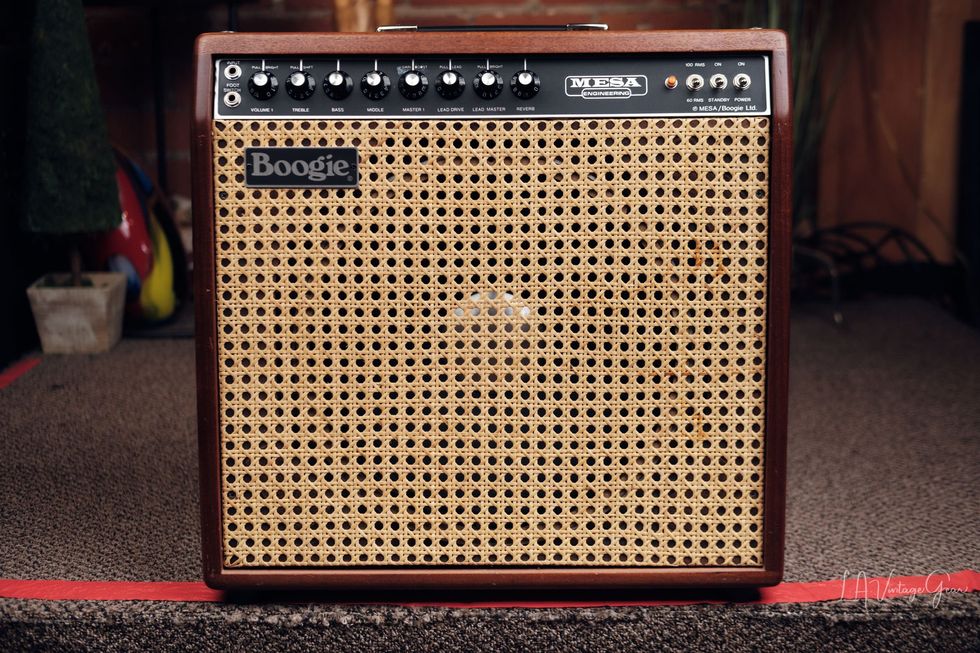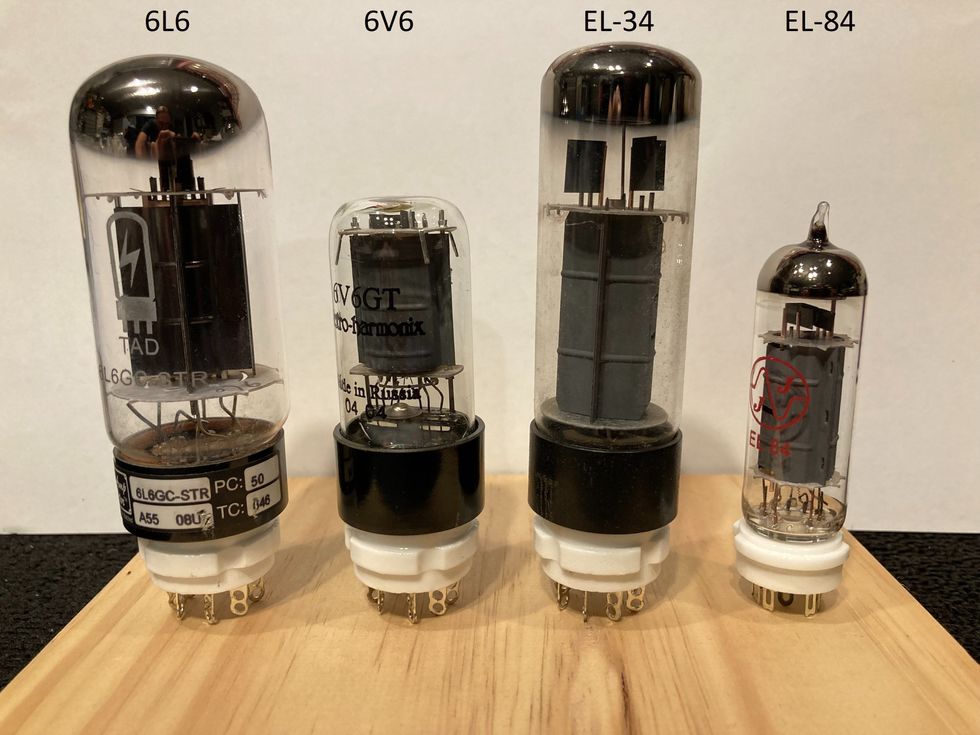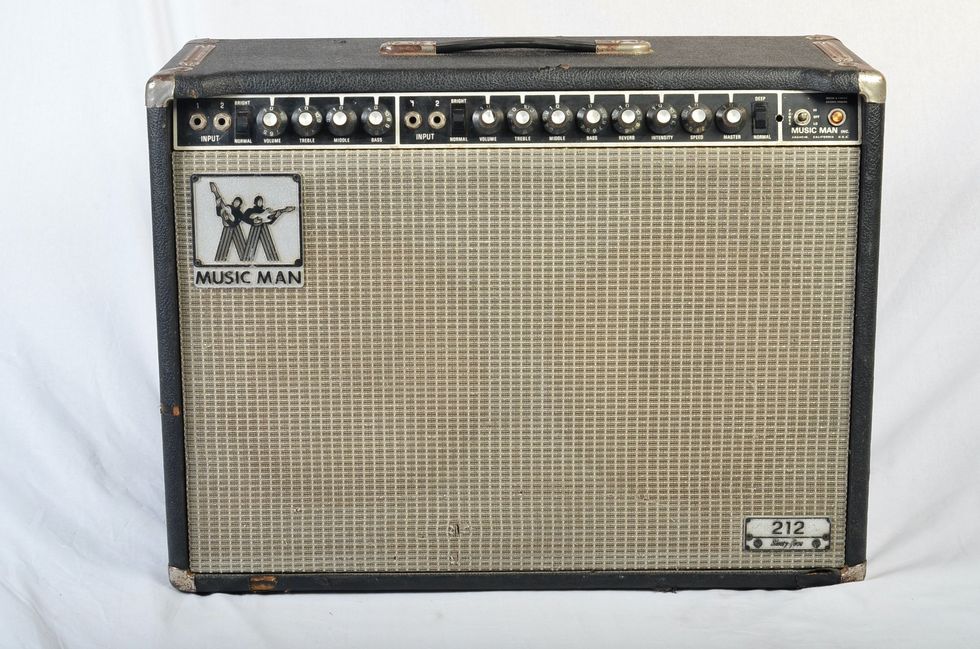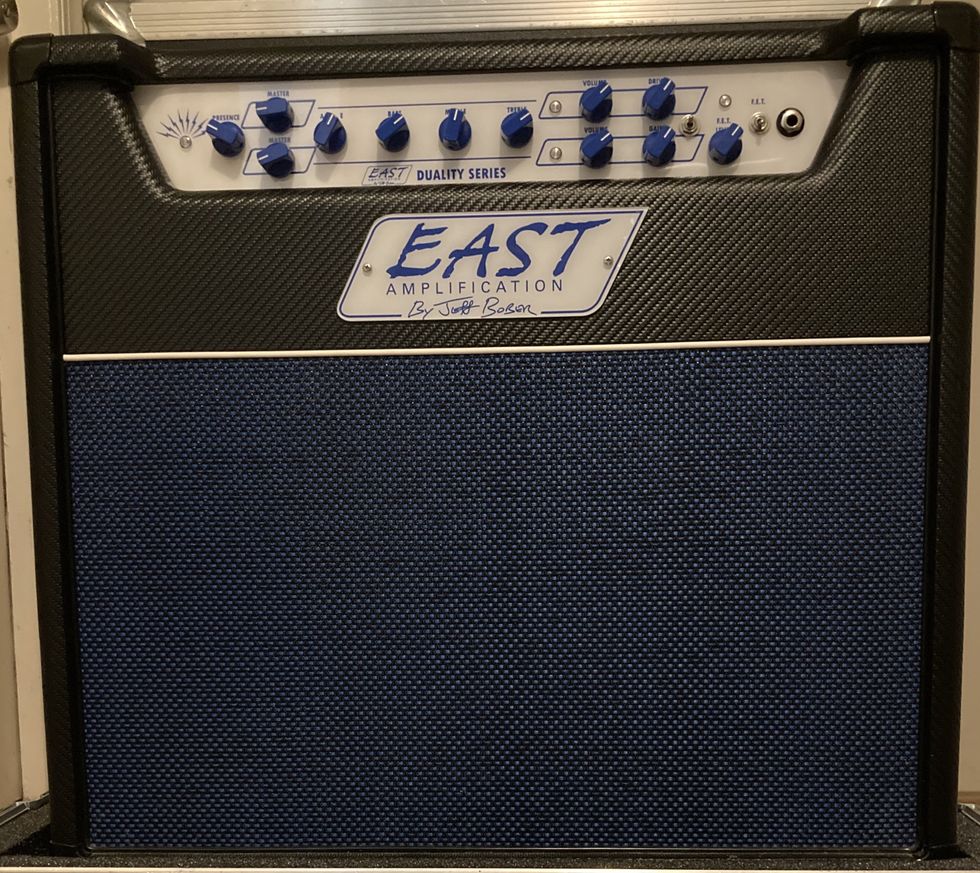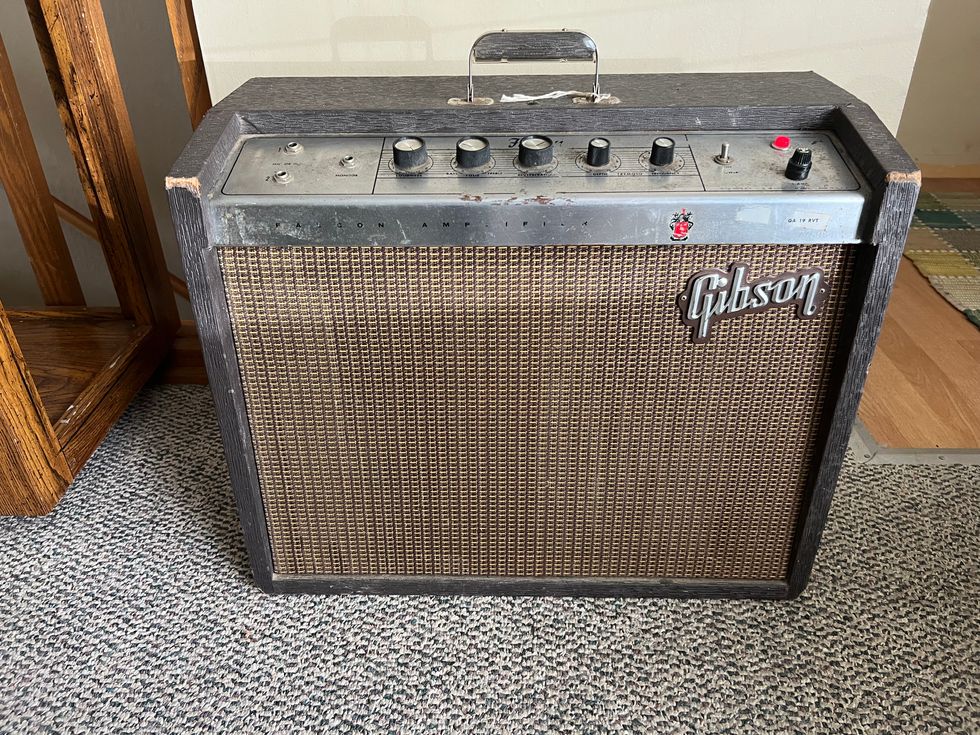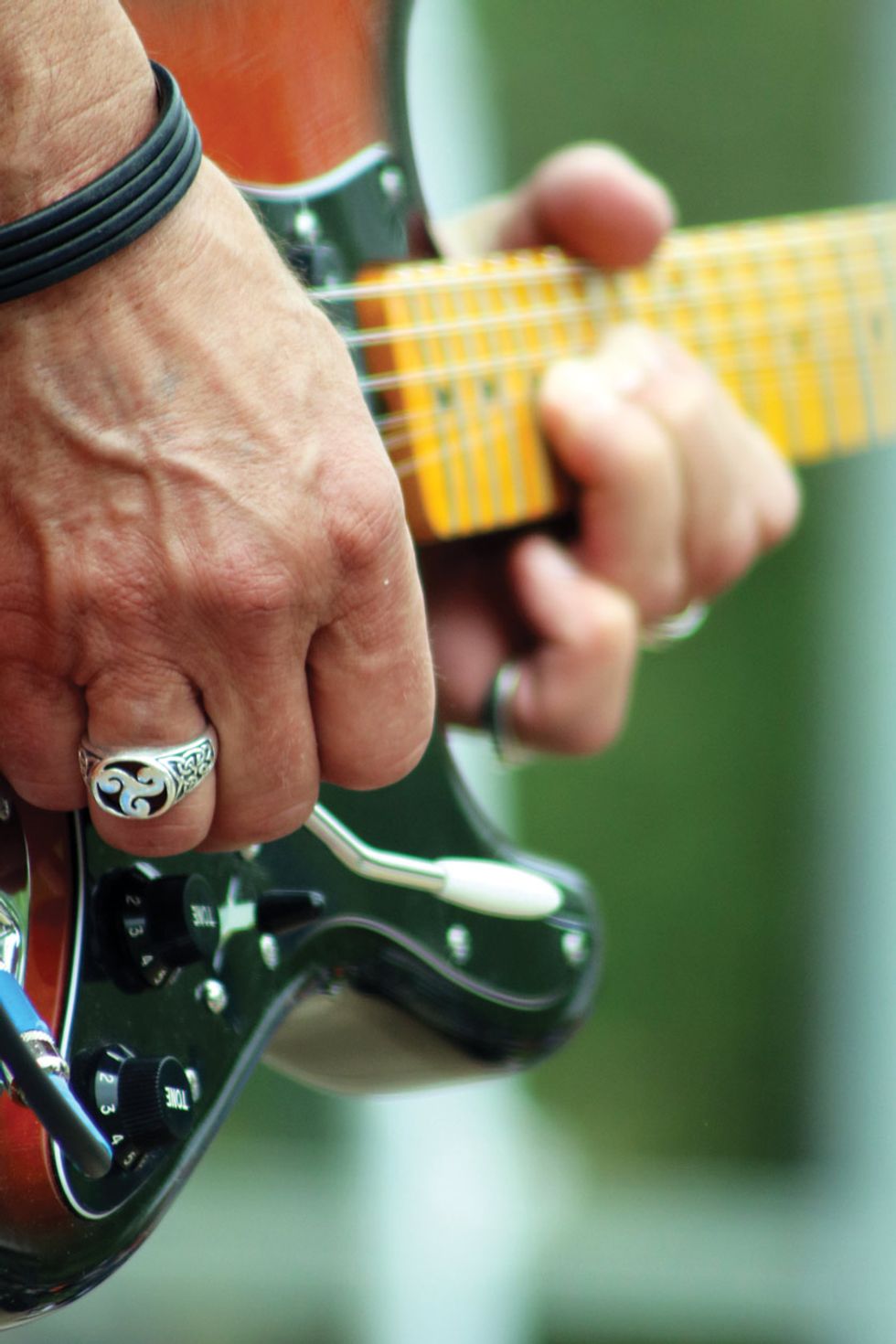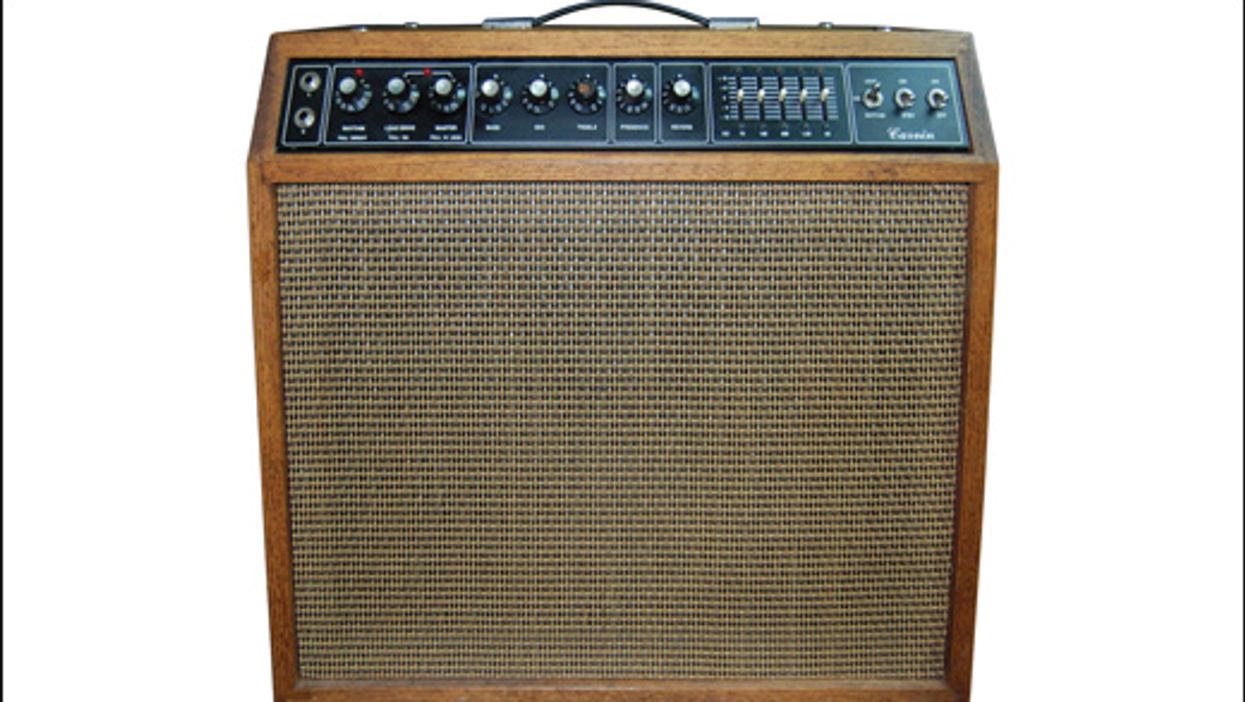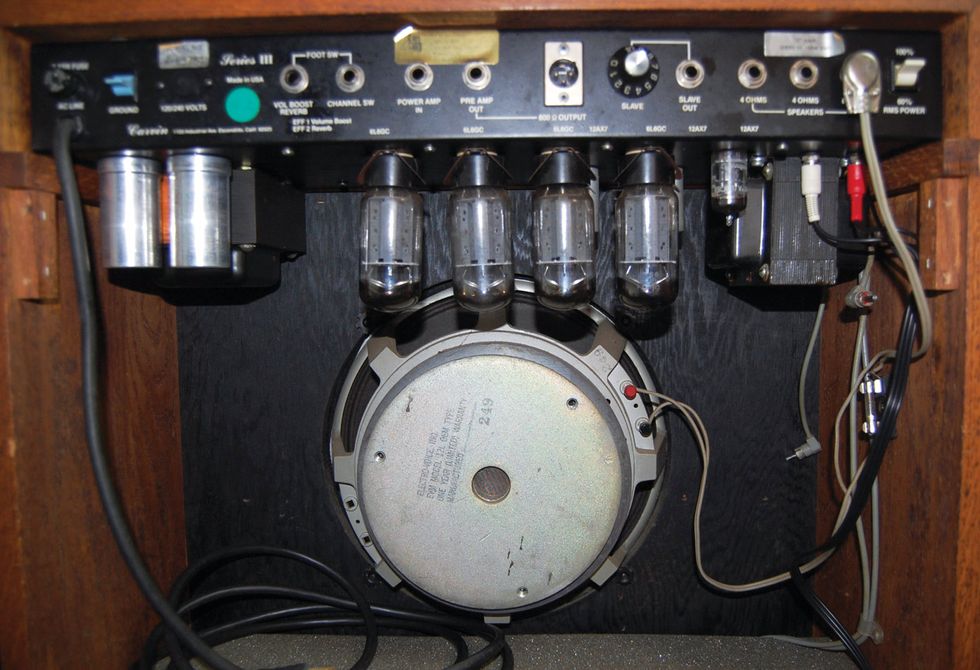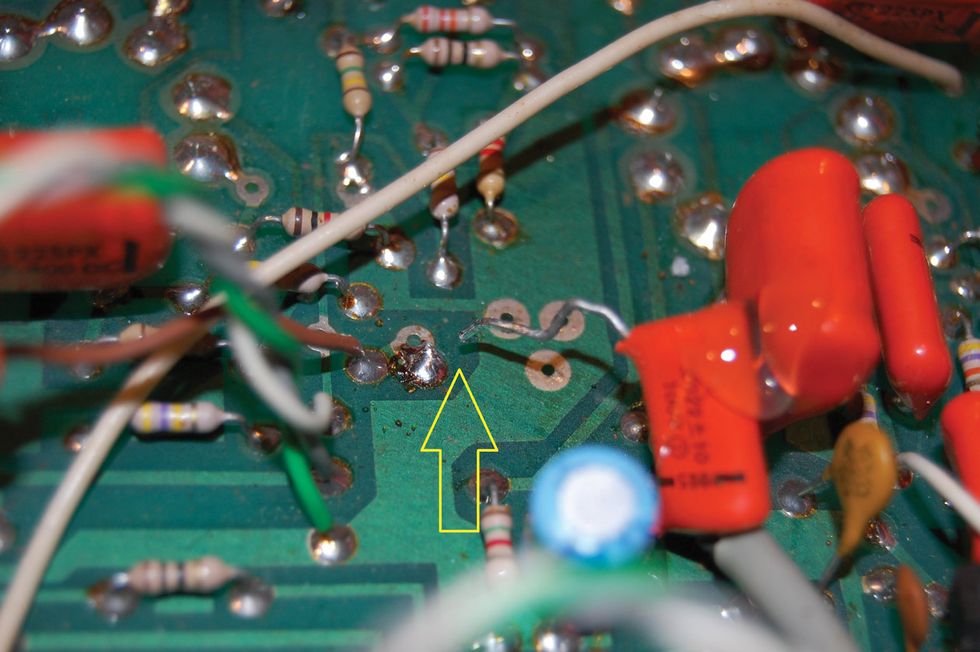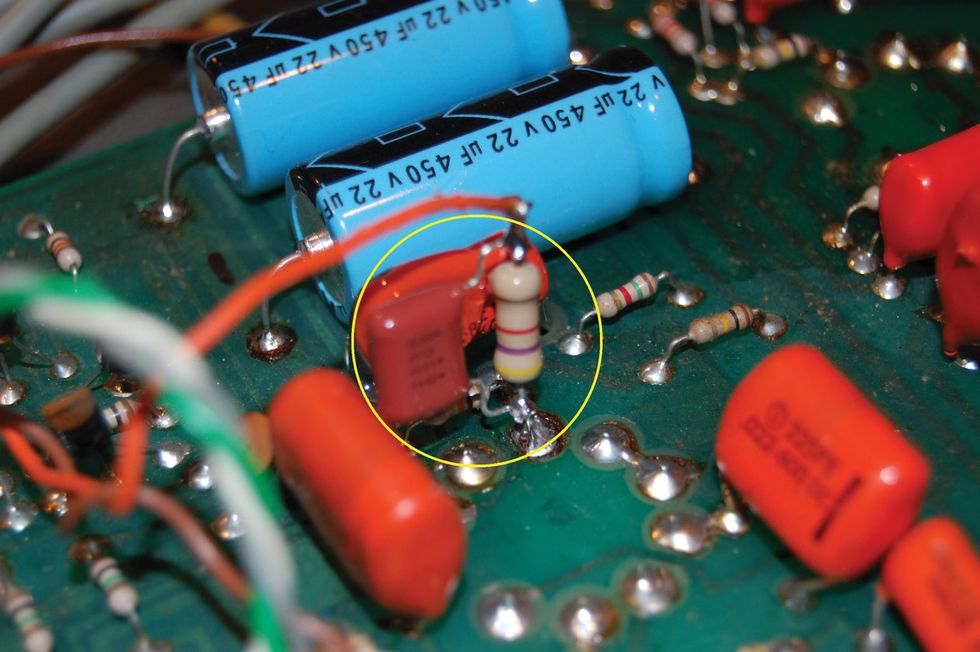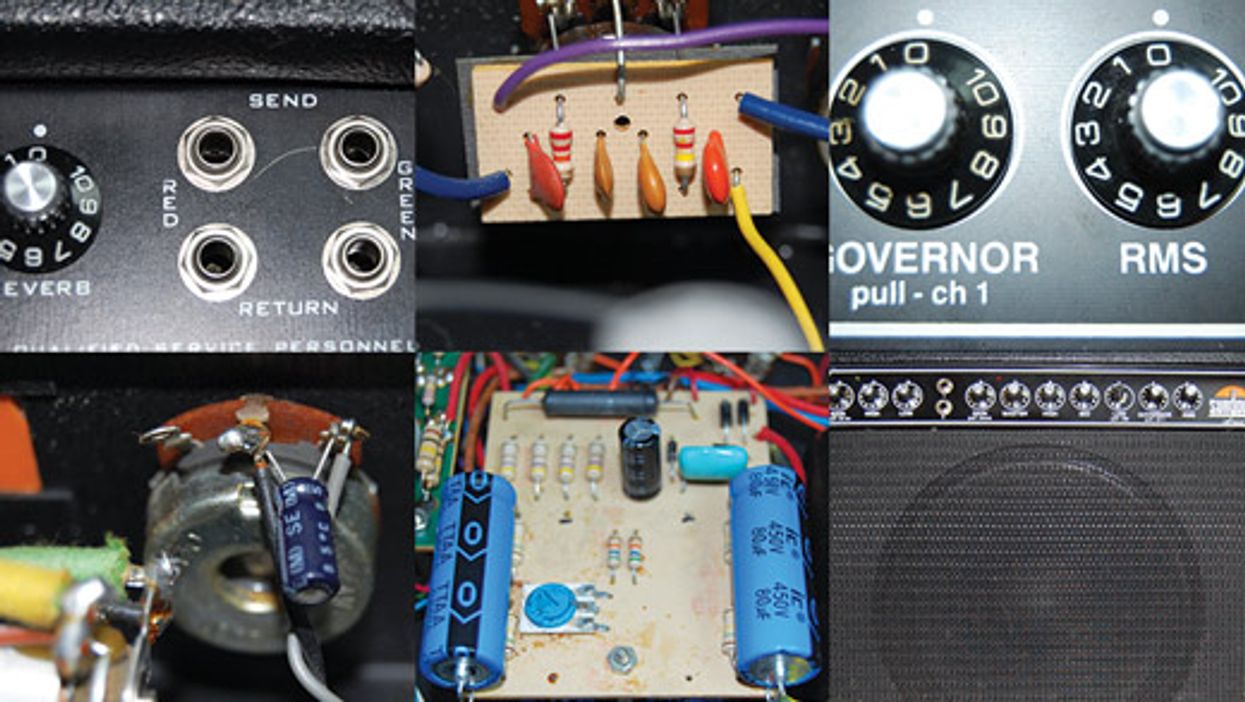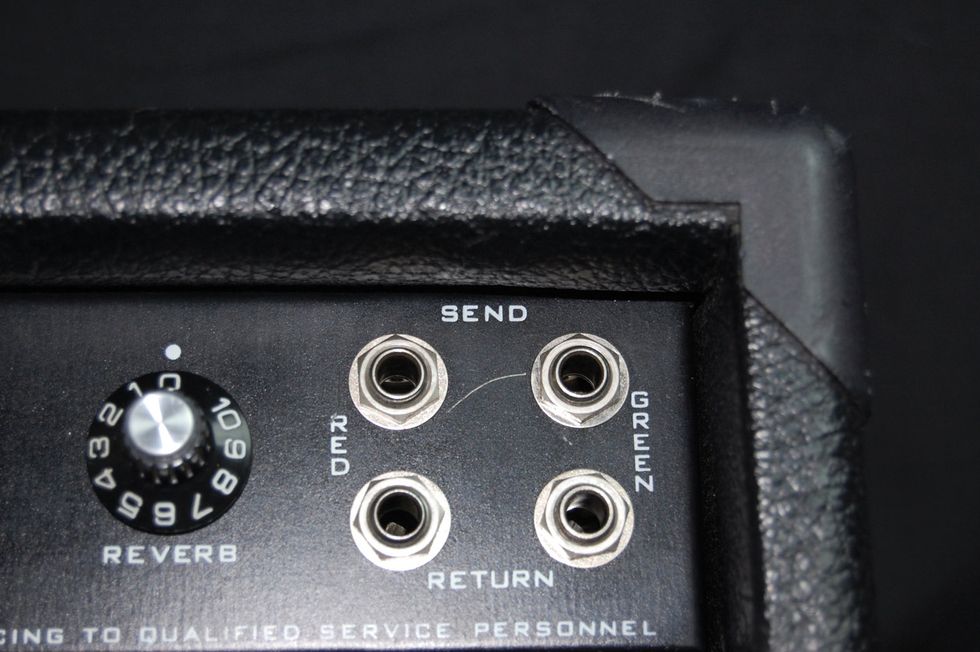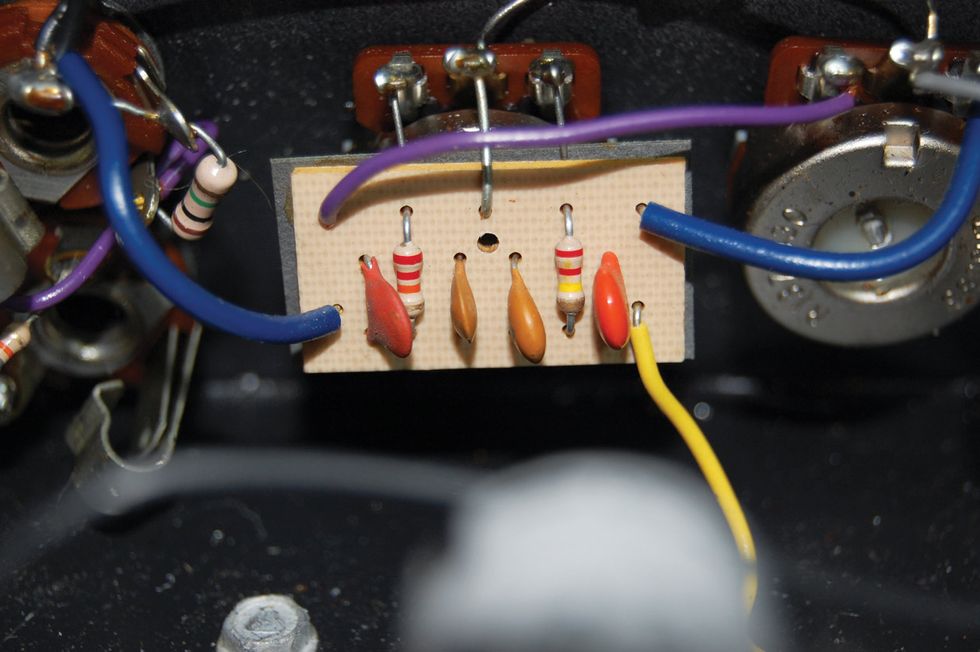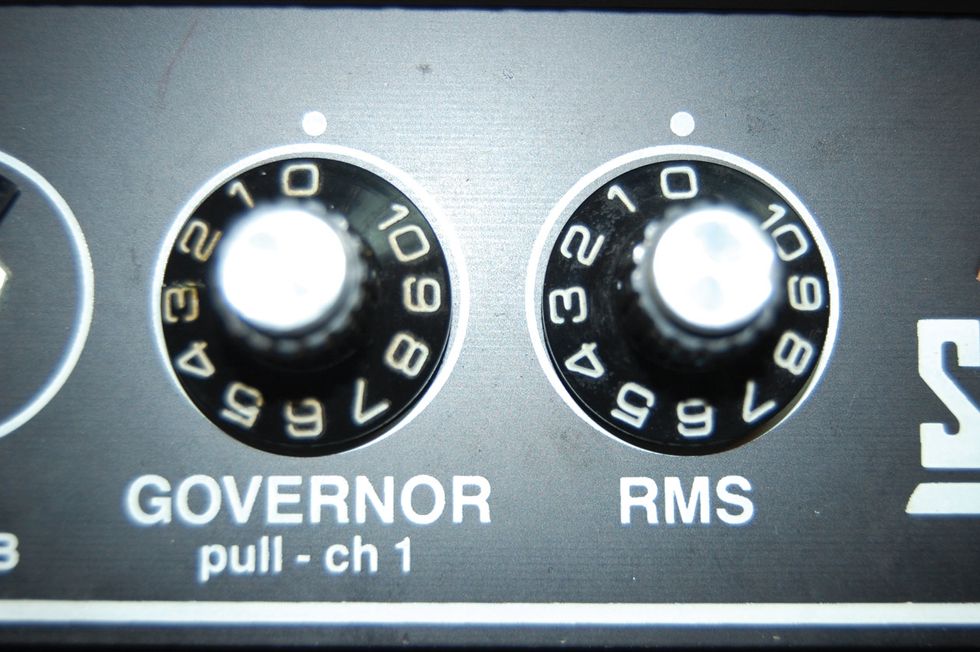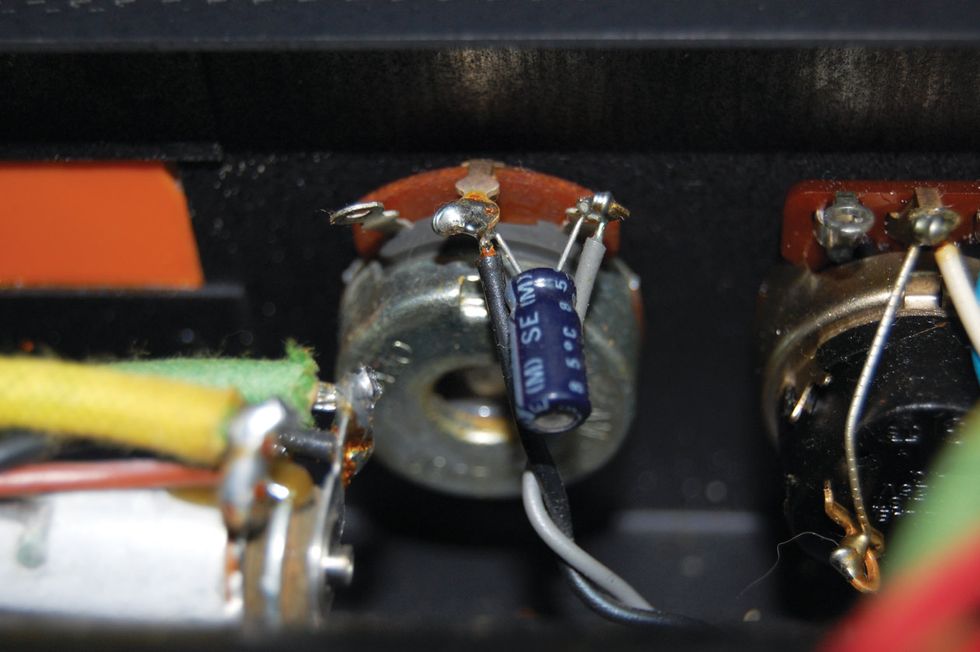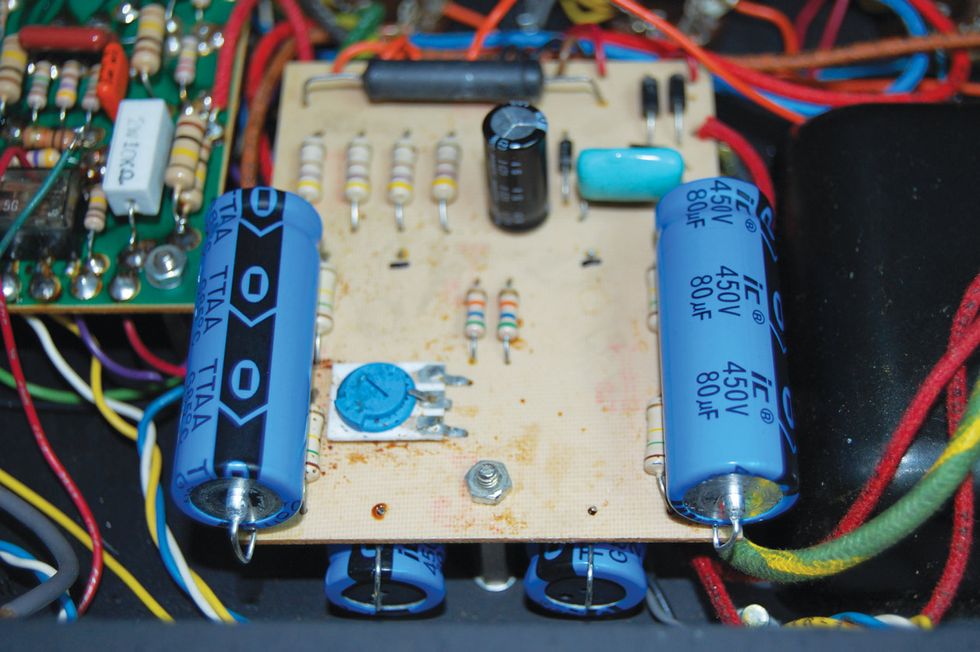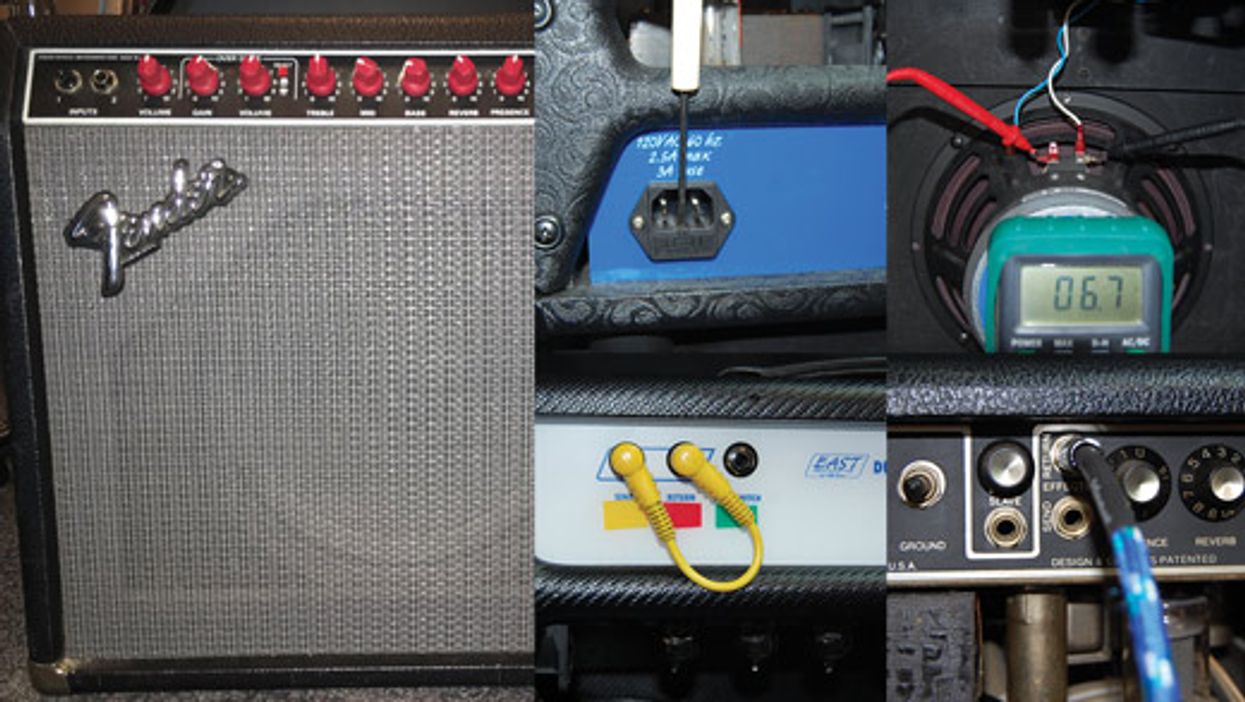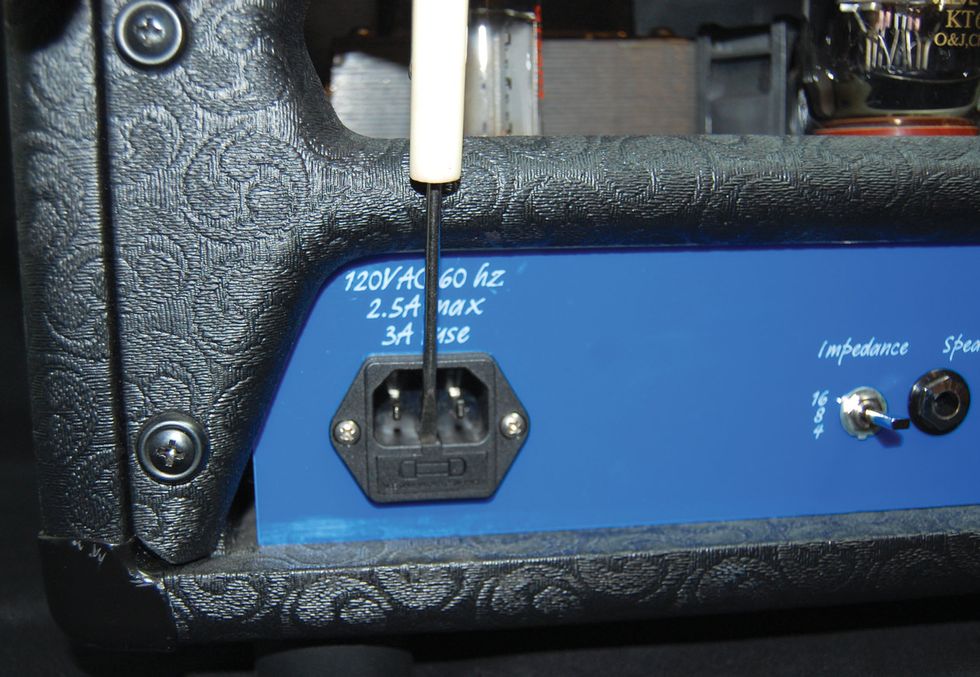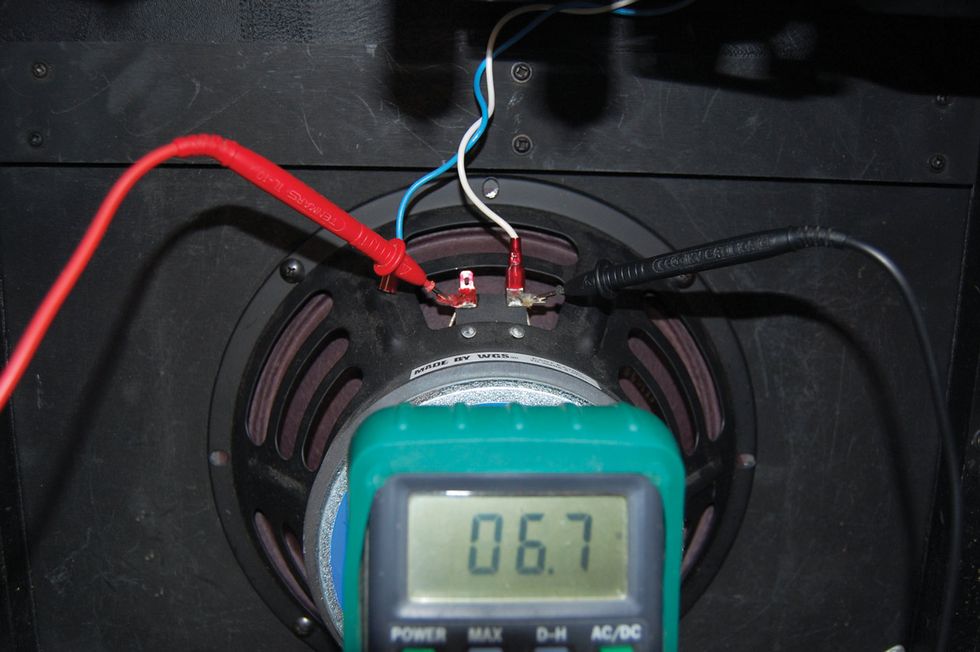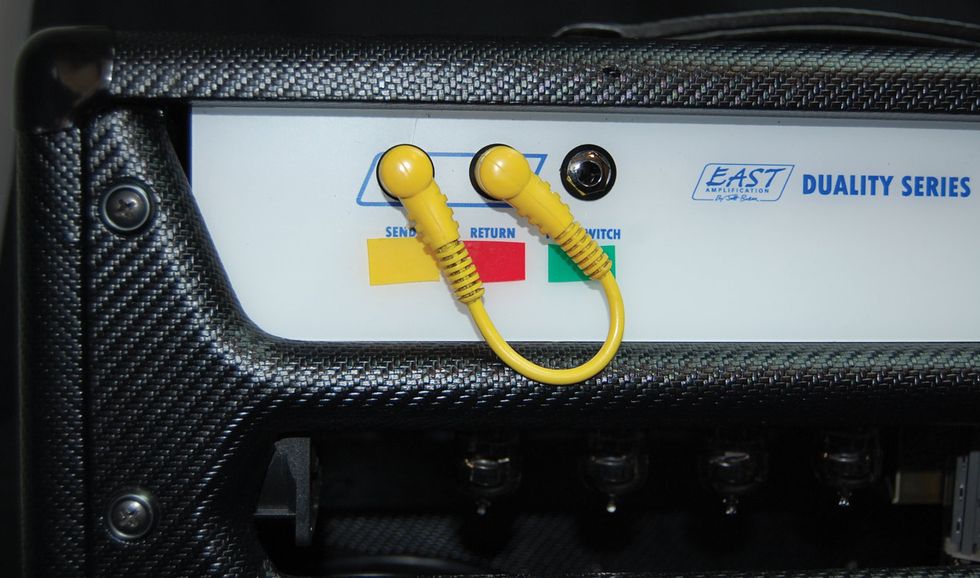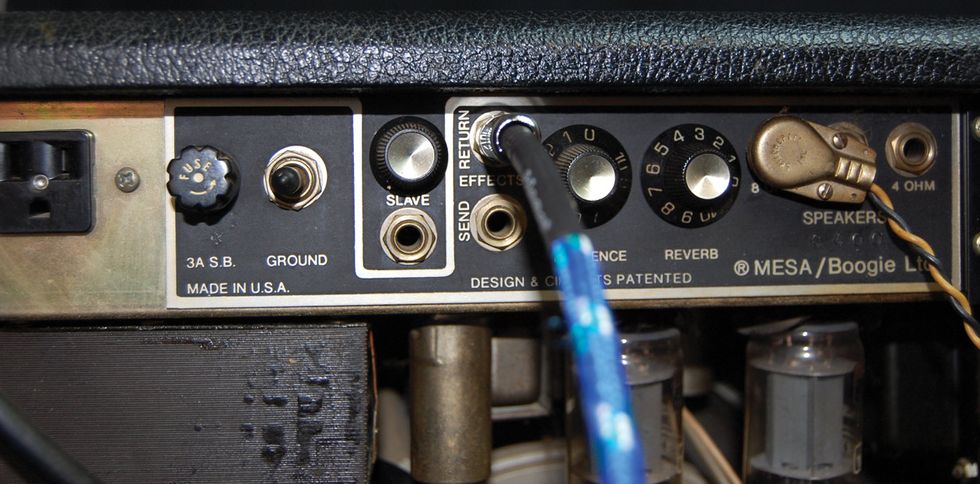Hello Jeff,
I have this early 1960s' Canadian-made tube amp. The amp says Regal on the front, with “Model No. 500" and “Made in Canada" on the control panel. I've been playing it a lot lately, and I really like it. The sound is very good—almost to the point of incredible. The amp has a 10" speaker. I want to know, would it be possible to put a bigger speaker in it? Or a speaker that is higher-wattage? The sound now can get a little fuzzy and a little farty at times. It's so close to sounding like a million-dollar amp, at least to me. I have no idea what wattage the speaker in it now is. If I try a different speaker, would I have to change any of the capacitors or resistors or anything like that?
I know it's hard to know anything without seeing or hearing the amp in person, but you have a lot of experience with old tube amps. I really have not much. I like playing bluesy rock—that early '70s-type Free, Cream, Led Zep sort of music. The Regal turned up all the way, either by itself or with a wah or a good vintage fuzz, has a good sound for that. But I just wonder if I was to put a higher-wattage speaker in it, would it get rid of all the unwanted sounds and make it into a great amp? I will send you a couple pics, so you can see what I am talking about. What is your past experience in dealing with these little 10" speaker tube amps? Have you been able to make them sound amazing or is it just better to keep it the way it is? Please give me any info you can.
Thank you,
Shad B.
Hello Shad,
Thanks for the question and the pics of this interesting little amp. Small, low-power amps like this have been responsible for more great-sounding guitar tones than we'll ever probably know, so, having never had one of these Regal amps cross my bench, I was definitely curious and decided to do some research on your little Canadian.
This photo of the amp's back shows its tube array, including a 6X4 rectifier tube, three 6AV6 preamp tubes,
and a single-ended 6AQ5 output tube.
From what I can tell, these Model 500 amps were probably only produced for a few years in the '60s and came in three different configurations. One style is the almost square box model that you have, another has a noticeably taller cabinet, and the third is a similar-shaped cabinet to yours but with no large bezel around the speaker grill. I'm not sure why they would produce three different styles of the same model amp, but we'll just chalk that up to the '60s!
Replacing the speaker could provide big tonal rewards. Several major manufacturers make ready-to-go substitutes.
The tube component of the amp consists of a 6X4 rectifier tube, three 6AV6 preamp tubes, and a single-ended 6AQ5 output tube. The tremolo is a cathode-modulated style, modulating the first 6AV6 preamp tube, and the output is approximately 4 watts, which puts it in the same category as a Fender Champ. While similar, the Regal's tone control puts this amp right between a Tweed Champ (no tone control) and a blackface or silverface Champ (with bass and treble controls). While the output tube in a Champ is a 6V6, the 6AQ5 is in the same family and supposedly sounds very similar.
Typical of budget amps from this era, the Royal 500 has multiple instrument inputs and tremolo.
Now let's talk about the speaker and “farty" issues. The first thing I would recommend is to start with the tubes. You didn't mention replacing them, so that would be the first line of attack to clean up the sound—especially the output tubes. Replacing weak output tubes, especially in the 6V6 family, can go a long way towards a better-sounding amp. I don't typically recommend this, but in this instance, if it's affordable, I would suggest sourcing NOS (new old stock) tubes for potentially better results. Next, I see from your pics that a few of the components appear to have been replaced, but it doesn't appear that the large silver filter capacitor has been replaced. While not an absolute necessity (unless the amp has a substantial level of hum), that may help tighten up the bottom end of the amp. If a direct replacement is not readily available, individual caps can be substituted inside the chassis. Just be sure to ground them to the same place that the large can cap is grounded for the least hum.
One improvement is to add an electrolytic capacitor by attaching it across the 420-ohm cathode resistor connected
to the 6AQ5 output tube.
Next, you mentioned replacing the speaker. I think this would make a substantial difference in the sound of the amp. Often one never realizes how worn out a speaker is until it's replaced. According to what I've read online, the factory speaker impedance is 4 ohms. The good thing is that companies such as Warehouse Guitar Speakers, Eminence, and Jensen are making replacement speakers in 10" 4 ohm offerings. The stock speaker appears to be an alnico magnet model, but I've always thought these are a bit more “brittle" or “papery" sounding. I personally prefer a ceramic magnet. As far as power rating, just about any speaker out there should be able to easily handle the whopping 4 watts, but I wouldn't recommend going with a speaker with a power rating greater than 20 or 30 watts, as it may begin to diminish the results.
WARNING:
All tube amplifiers contain lethal voltages. The most dangerous voltages are stored in electrolytic capacitors, even after the amp has been unplugged from the wall. Before you touch anything inside the amp chassis, it's imperative that these capacitors are discharged. If you are unsure of this procedure, consult your local amp tech.One more thing I noticed while checking out a schematic for this amp is that the output tube cathode bias resistor doesn't have a cathode bypass capacitor. If you'd like to experiment with the addition of one, I recommend an electrolytic cap in the 10 µF to 25 µF range with a 25- to 50Vdc rating. Attach the cap across the 420 ohm cathode resistor connected to the 6AQ5 output tube, with the + side of the cap towards the tube. You can use a pair of alligator leads to listen with and without the cap to see which way you prefer the amp. The cap will probably tighten up the bottom end, but will also add some brightness or clarity, which you may or may not prefer.
Well, there you have it. I hope that brings royal performance to your Regal.


